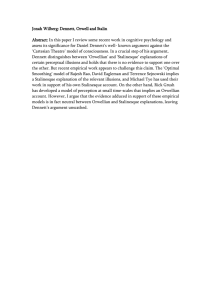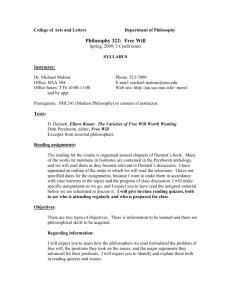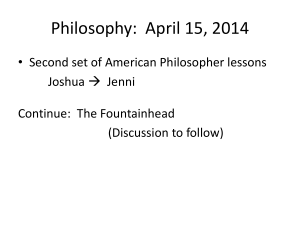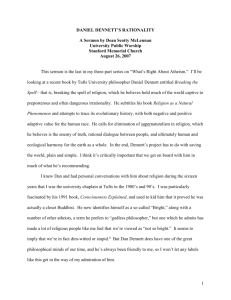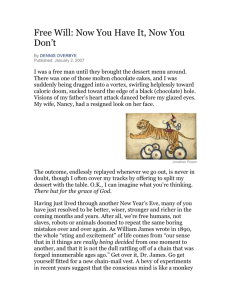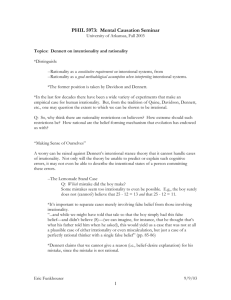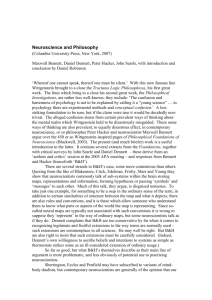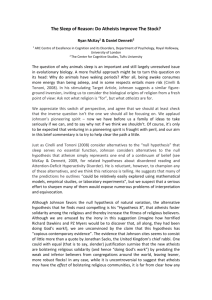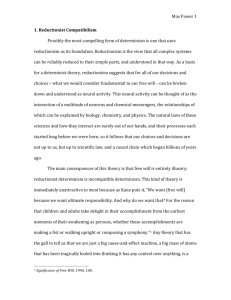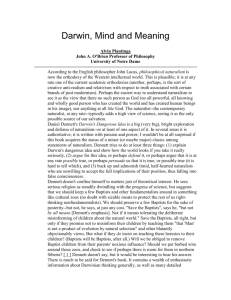Reading 25
advertisement
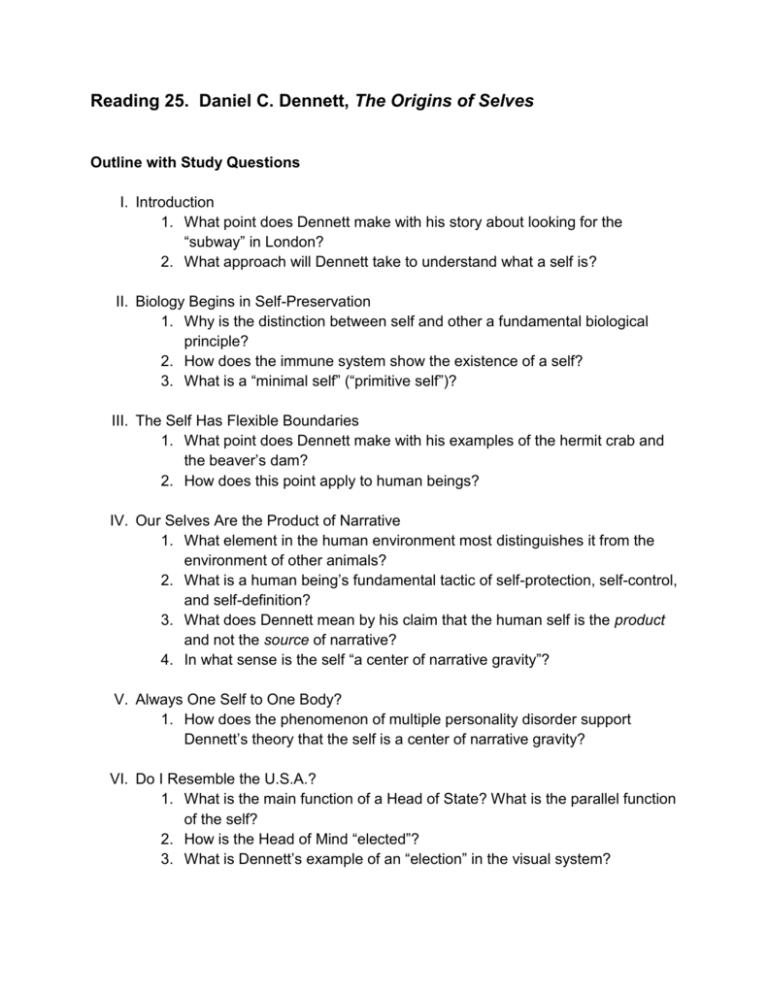
Reading 25. Daniel C. Dennett, The Origins of Selves Outline with Study Questions I. Introduction 1. What point does Dennett make with his story about looking for the “subway” in London? 2. What approach will Dennett take to understand what a self is? II. Biology Begins in Self-Preservation 1. Why is the distinction between self and other a fundamental biological principle? 2. How does the immune system show the existence of a self? 3. What is a “minimal self” (“primitive self”)? III. The Self Has Flexible Boundaries 1. What point does Dennett make with his examples of the hermit crab and the beaver’s dam? 2. How does this point apply to human beings? IV. Our Selves Are the Product of Narrative 1. What element in the human environment most distinguishes it from the environment of other animals? 2. What is a human being’s fundamental tactic of self-protection, self-control, and self-definition? 3. What does Dennett mean by his claim that the human self is the product and not the source of narrative? 4. In what sense is the self “a center of narrative gravity”? V. Always One Self to One Body? 1. How does the phenomenon of multiple personality disorder support Dennett’s theory that the self is a center of narrative gravity? VI. Do I Resemble the U.S.A.? 1. What is the main function of a Head of State? What is the parallel function of the self? 2. How is the Head of Mind “elected”? 3. What is Dennett’s example of an “election” in the visual system? Questions for Reflection and Discussion 1. Is an investigation of the evolutionary origin of the self the best way to understand the nature of the self? 2. Does the biological phenomenon of self-preservation show that every organism has a self? 3. Is the human self the product of stories we tell featuring ourselves as the main character? 4. Is the human narrative self any more real than the main character in a novel? 5. Is the self an abstraction? Is it a thing? 6. Can a human being have more than one self? no self at all? For Further Reading Dennett, Daniel C. Brainstorms: Philosophical Essays on Mind and Psychology. Montgomery, VT: Bradford Books, 1978. 353 pp. In the final chapter, “Where Am I?” (pp. 310–23), Dennett raises philosophical questions about the self and personal identity through a fictional account of his secret mission to retrieve a radioactive nuclear warhead while leaving his brain behind in a vat. Dennett, Daniel C. Consciousness Explained. Boston: Little, Brown & Co., 1991. 511 pp. See Chapter 13, “The Reality of Selves” (pp. 412–30). Dennett, Daniel C. “The Self as a Center of Narrative Gravity.” In Self and Consciousness: Multiple Perspectives, ed. Frank S. Kessel, Pamela M. Kohl, and Dale L. Johnson, pp. 103–15. Hillsdale, NY: Lawrence Erlbaum Associates, 1992. Dennett compares the center of gravity of a physical object to the self as the narrative center of gravity of a person, arguing that both are abstract, fictional objects. Humphrey, Nicholas, and Daniel C. Dennett. “Speaking for Ourselves: An Assessment of Multiple Personality Disorder.” Raritan: A Quarterly Review 9 (Summer 1989): 69–98. Dennett and theoretical psychologist Humphrey explore multiple personality disorder and its implications for the nature of the self. McCarthy, Joan. Dennett and Ricoeur on the Narrative Self. Amherst, NY: Humanity Books, 2007. 298 pp. See Chapter 1, “Dennett’s Brand of Naturalism” (pp. 23–46); Chapter 2, “The Naturalist Narrative Self” (pp. 47–71); and Chapter 3, “The Limitations of Dennett’s Account” (pp. 73–104).
